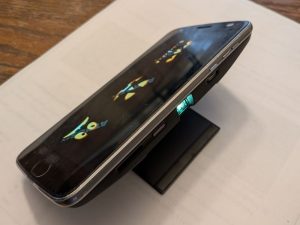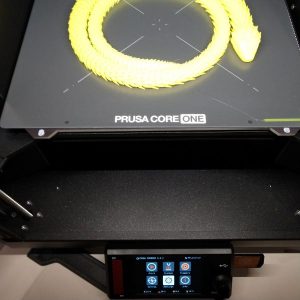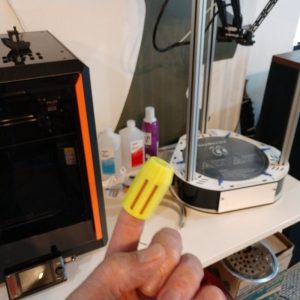For many years now at Halloween we’ve helped Putnam County Library for the Scary Science exhibit in the Kiwanis Room downstairs. We are often there 3D printing bats or witches hats, explaining how it works, or sometimes giving away laser cut ghosts and goblins. Last year we added a ghostly optical illusion using a technique called Pepper’s ghost to project holograms.
This year to try something different we 3D printed a pumpkin and then projected a talking face on it, which turned out to be another great illusion. By using a phone to project the face, most folks were looking behind the pumpkin or asking how we did it!
The idea is based on a project from DIY Machines, who deserves full credit for coming up with a great makerspace Halloween project idea. Unfortunately it’s a bit complex and pretty time consuming project, although we’ll incorporate more elements of it next year to display at the makerspace. And it was designed to be an outdoor display, while at the library we were going to be using it indoors. But having enough time to do it was the real limiting factor.
We went ahead and printed one of the pumpkins in orange and then realized we could project the face on the pumpkin using a projector attachment for my Moto Z phone. All we really had to do was lay the phone on the table across from the 3D printed pumpkin to project the face on the pumpkin.



















